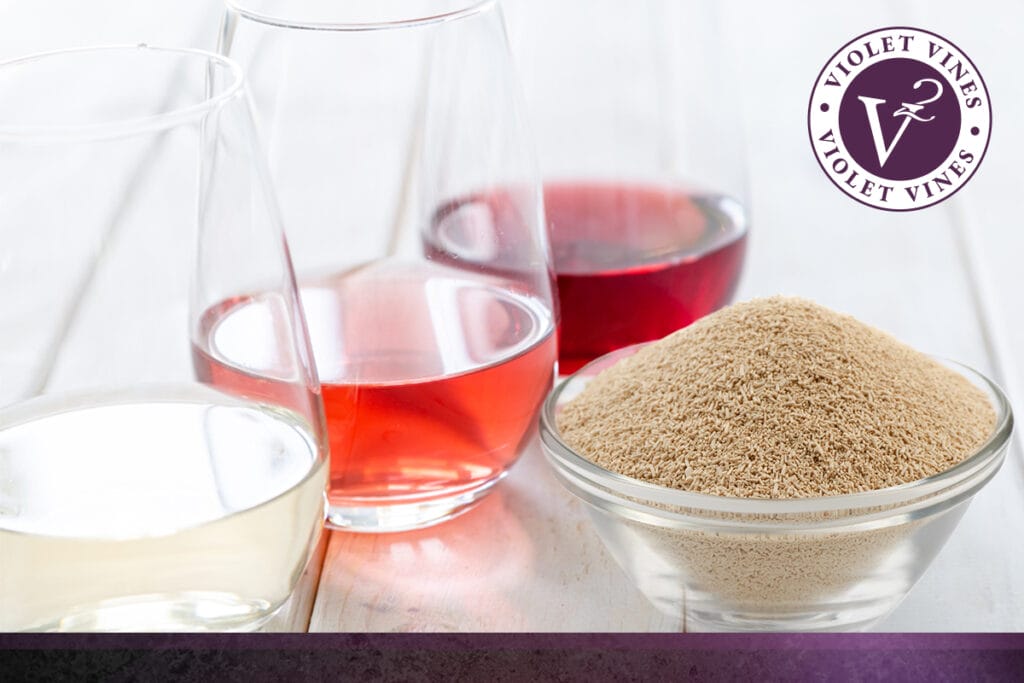Not All Yeasts – And Malo Bugs – Are The Same!
August 17, 2023
As we prepare for the 2023 harvest, we not only focus on the grapes but also on the different organisms that perform the real work once the grapes arrive in the winery, turning the grape juice into wine.
I won’t make this a dissertation on yeasts or other beneficial bacteria in winemaking, but one thing’s for sure – not all yeasts and bacteria are the same. I thought I would share a little bit on what we’re thinking going into the 2023 vintage and what we intend to employ to create the best Oregon-grown wines imaginable.
There’s three “organisms” I’ll cover in this blog:
- Saccharomyces cerevisiae yeasts
- n–Saccharomyces(or non-Sacc) yeasts
- Oenococcus oeni malolactic fermentation bacteria
Saccharomyces Cerevisiae
Yeast is a fungus that converts the sugar in grape juice to alcohol and carbon dioxide. Although there are many different genera and species of yeasts that perform this work, Saccharomyces cerevisiae is the most common yeast used in primary fermentation. But what’s unknown to most is that many different strains of Saccharomyces yeasts have been isolated over the years based not just on their ability to ferment, but also based on alcohol tolerance, their need for nutrients, temperature adaptability, and… what they do for mouthfeel and aroma. Different yeasts have different outputs and depending on the winemaking style, winemakers pick certain yeasts since they have a big impact on taste and feel.
In 2023, here’s a summary of the yeasts we plan to use for our different varietals for the still wine program:
- Pinot Noir – Vitilevure 3001 and Exotics Mosaic
- Chardonnay – Lalvin CY3079 and CVW5
- Cabernet Franc – ICV D254
- Syrah – ICV D254
- Grenache – ICV GRE
- Mourvèdre – ICV GRE
- Albariño – ICV D47
- Malbec – Lalvin ICV D80
If you want to learn more about the reasons why we chose the yeasts we did for each varietal, a great source is www.scottlab.com.
Non-Sacc Yeasts
Scott Labs’ website says it best – the term non-Saccharomyces (or non-Sacc) yeast is a colloquial term that is used to refer to the yeast associated with the pre-and early fermentation stages of winemaking that are not part of the genus Saccharomyces. These yeasts can’t consume all sugar and therefore can’t complete fermentation alone.
Not always employed or necessary, we’re experimenting with the use of a non-Sacc product this year called Laktia (a Lachancea thermotolerans strain). We intend to use if for certain varietals before primary fermentation because it produces lactic acid from the sugar in the grapes, and as the product description states, it “impacts acid levels and brings freshness and aromatic complexity to wines.” This is a profile I really enjoy and we hear over and over from so many of our customers that they do too.
Oenococcus oeni
Malolactic fermentation is an important part of winemaking, impacting wine microbial stability, mouthfeel and taste (to name a few). Typically occurring after primary fermentation, it is almost always used in red wines and in some cases, white wines. As opposed to yeasts, malolactic fermentation is performed by bacteria – often Oenococcus oeni – which converts malic acid to the softer lactic acid (which is the same acid found in milk). There are other byproducts, which is why allowing wines to go through malolactic fermentation is a winemaking choice. For example, our red wines always go through malolactic fermentation, whereas our white wines may only go through partial “malo”.
Malolactic fermentation will often occur naturally, with conditions dictating timing. But for those that want to influence mouthfeel and taste, there are different “malo bugs” (bacterial strains) with certain profiles and characteristics that the winemaker can introduce. For example, we chose a product called O-Mega – a strain of Oenococcus oeni – for our Chardonnays because it results in lower diacetyl, which is that buttery taste found in some Chardonnays. We prefer a more crisp, fresh taste for our Chardonnays, which made this Malo bug a great choice.
Conclusions
To me, winemaking is a journey in experimentation which is a big part of the fun in the winery. True, great wine is 80% a result of the grapes and vineyard practices, but decisions on yeast and malo can really elevate the fruit juice as it transforms into world-class wines.

